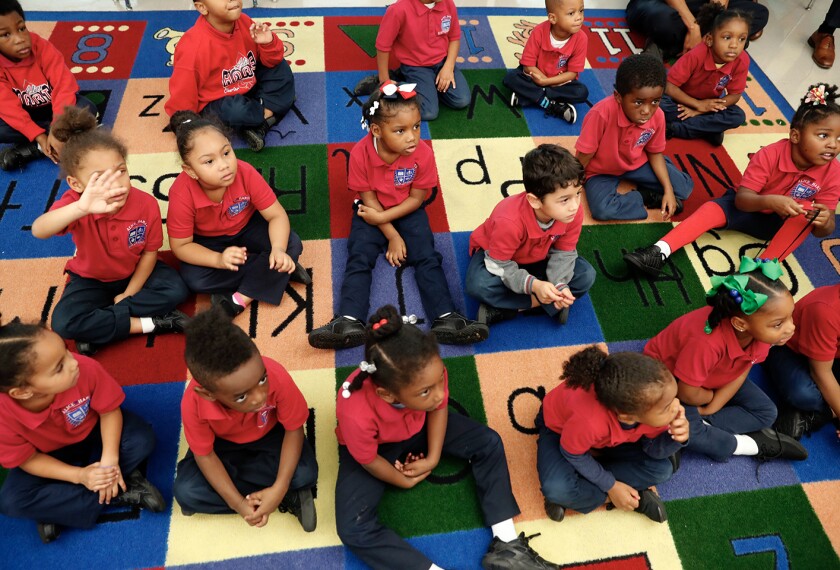Includes updates and/or revisions.
Early-childhood-education programs and school facilities would get major new federal aid under a bill approved last week by the U.S. House of Representatives that would cover the cost of that spending by revamping the way the federal student-lending program operates.
The House legislation, which passed Sept. 17 by a vote of 253-171, would scrap the Federal Family Education Loan Program, under which the government subsidizes private lenders to make federal loans.
Instead, starting in July of next year, all loans would originate with the William D. Ford Federal Direct Student Loan Program, in which students borrow from the U.S. Treasury. The change, largely based on a proposal put forward by President Barack Obama, would save about $87 billion over 10 years, according to the nonpartisan Congressional Budget Office.
The legislation must now go to the Senate, where a separate bill on the same issue is still being worked out in committee.
“It’s a win for students. They’ll have dependable access to federal college aid,” Rep. George Miller, D-Calif., the chairman of the House Education and Labor Committee, said during floor debate. “And it will help again regain our global leadership in both competitiveness and in college-graduation rates.”
School Construction
A portion of the projected savings from the Student Aid and Fiscal Responsibility Act, about $4 billion over two years, would go to districts to help with school modernization, renovation, and repair. The money would flow through the same formula used for Title I Part A of the Elementary and Secondary Education Act, which aids disadvantaged students, but each district would receive at least $5,000.
Most of the projects would have to meet certain energy and environmental building standards. States could reserve 1 percent of the funding to administer the program and develop voluntary guidance on how the money should be used. The measure would provide an additional $60 million over two years for public elementary and secondary schools in the Gulf Coast region that were devastated by hurricanes Katrina and Rita in 2005.
“We think this is a good start,” said Mary Filardo, the executive director of the 21st Century Schools Fund, an organization in Washington that advocates improved urban school facilities. She said the federal government contributes about 10 percent of schools’ operating budgets and would like to see Congress pass legislation covering the same amount of capital costs.
The bill also would provide $1 billion annually for an “Early Learning Challenge Fund,” which would help states improve early-learning standards, provide professional development for instructors, and improve support to parents, as well as other measures. (“Early Education Issues Return to Spotlight,” this issue.)
And the bill would include $10 billion over 10 years to bolster community colleges, plus additional resources to improve community-college facilities.
It calls for grants of at least $1 million each for community colleges to help overhaul remedial and adult-education programs and improve dual-enrollment offerings, such as early-college high schools, among other activities.
The measure also includes $40 billion to increase the maximum annual Pell Grant scholarship to $5,550 in 2010 and to $6,900 by 2019. And, starting in 2010, the grants, which go to low-income students, would be linked to the Consumer Price Index plus 1 percentage point.
Savings Questioned
Still, those elements weren’t the focus of most of the floor debate over the legislation, which centered on the student-loan provision. Many GOP lawmakers are worried about the long-term implications of the switch and dubious about the estimate of projected savings.
During floor debate, Rep. John Kline of Minnesota, the top Republican on the House Education and Labor Committee, referred to a second CBO estimate, requested by Sen. Judd Gregg, R-N.H., that took into account “market risk” and showed considerably less savings—about $47 billion.
Rep. Kline said those who say the bill would increase the federal deficit “have the arguments in their favor” and labeled the bill “an expansion of the government, with new programs and new spending. It is a government takeover,” he said.
Sen. Tom Harkin, D-Iowa, the new chairman of the Senate Health, Education, Labor, and Pensions Committee, also expects legislation in that chamber to include new resources for school facilities, early-childhood education, and community colleges, a Democratic Senate aide said.




